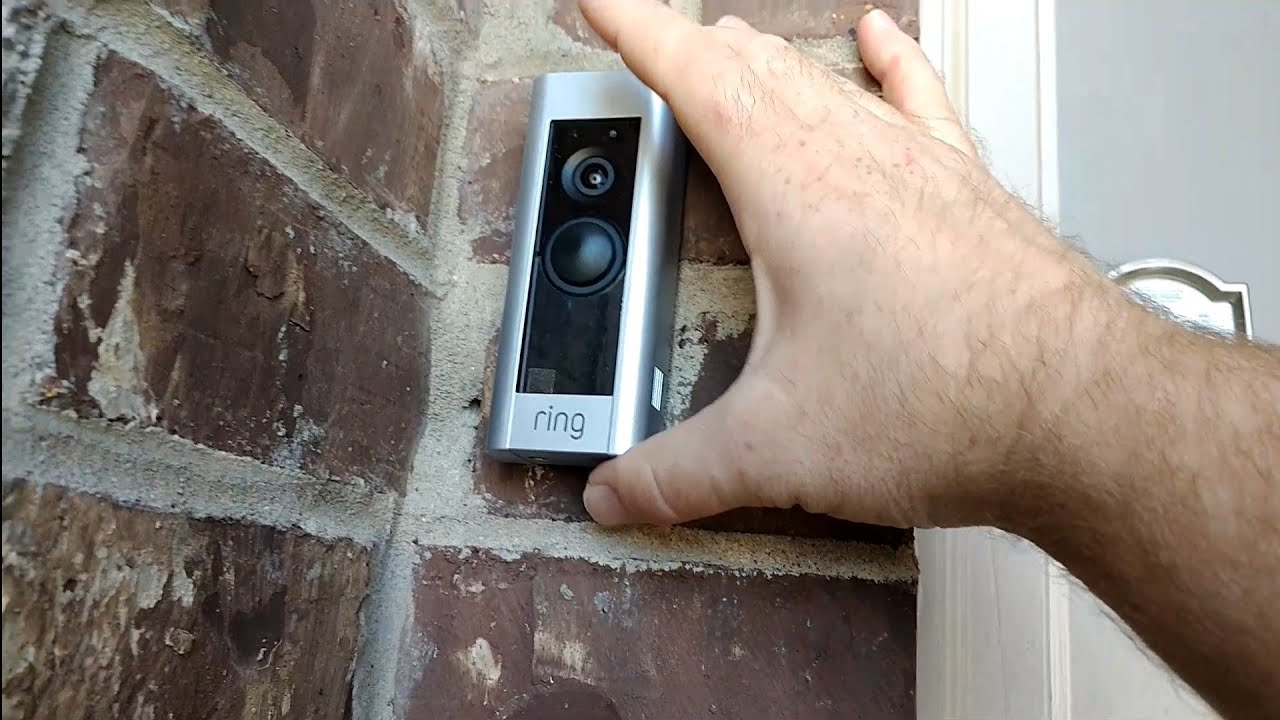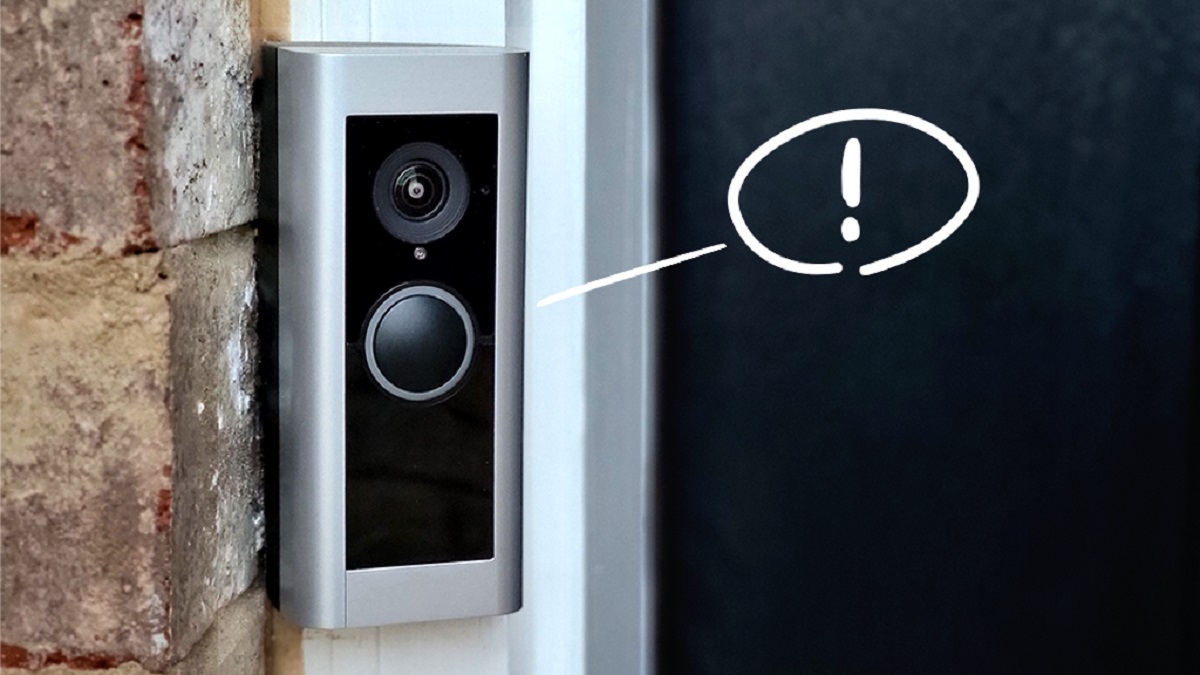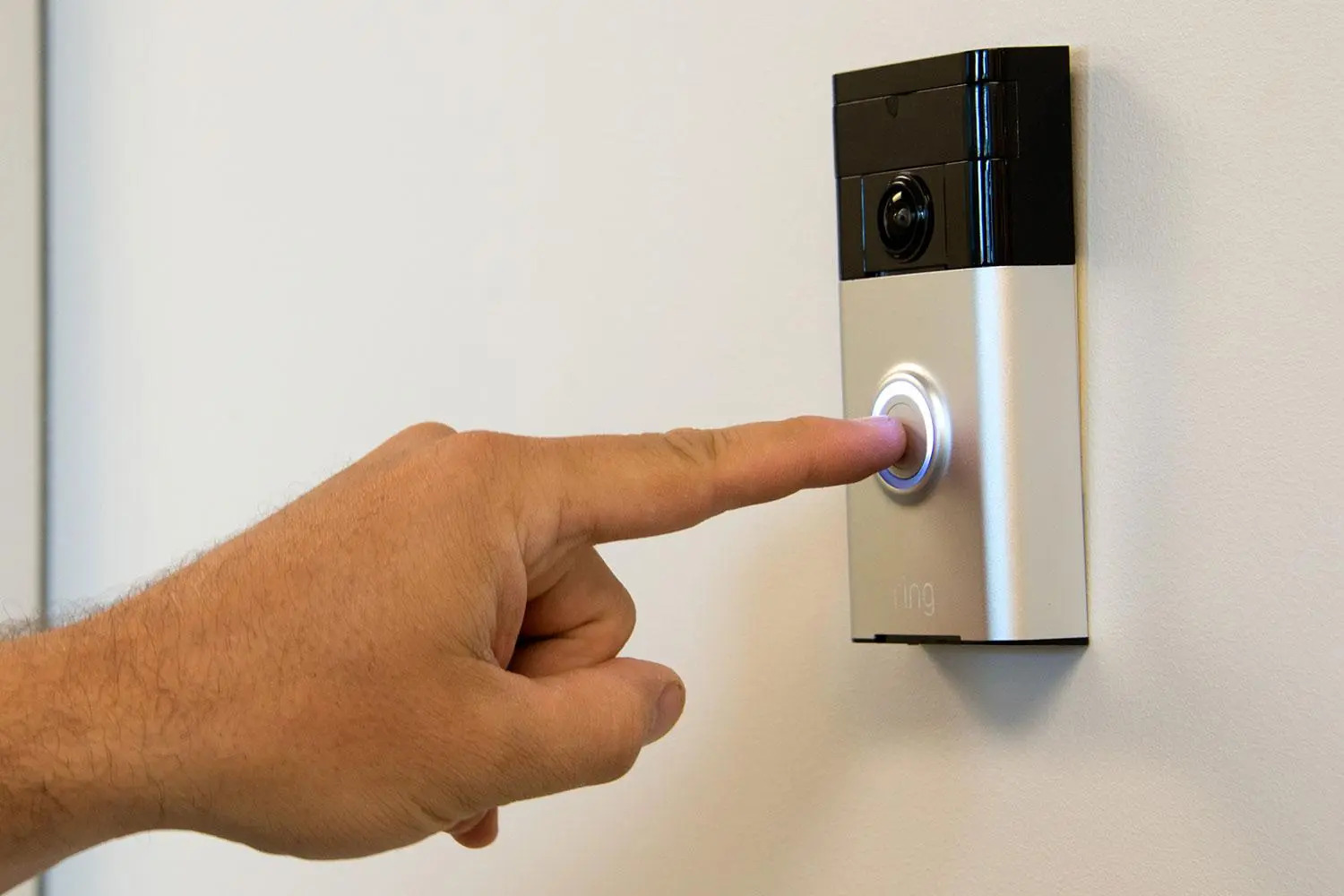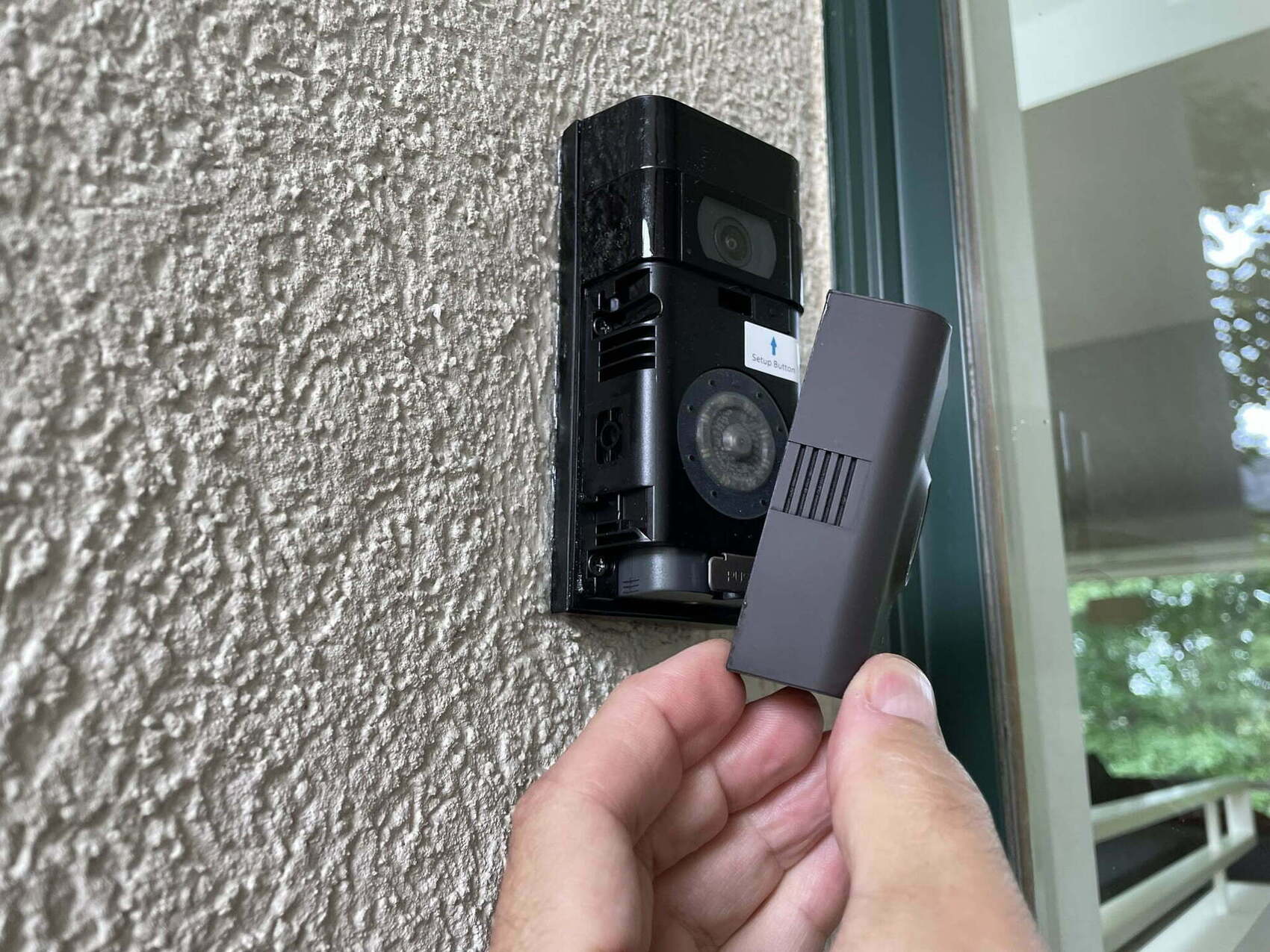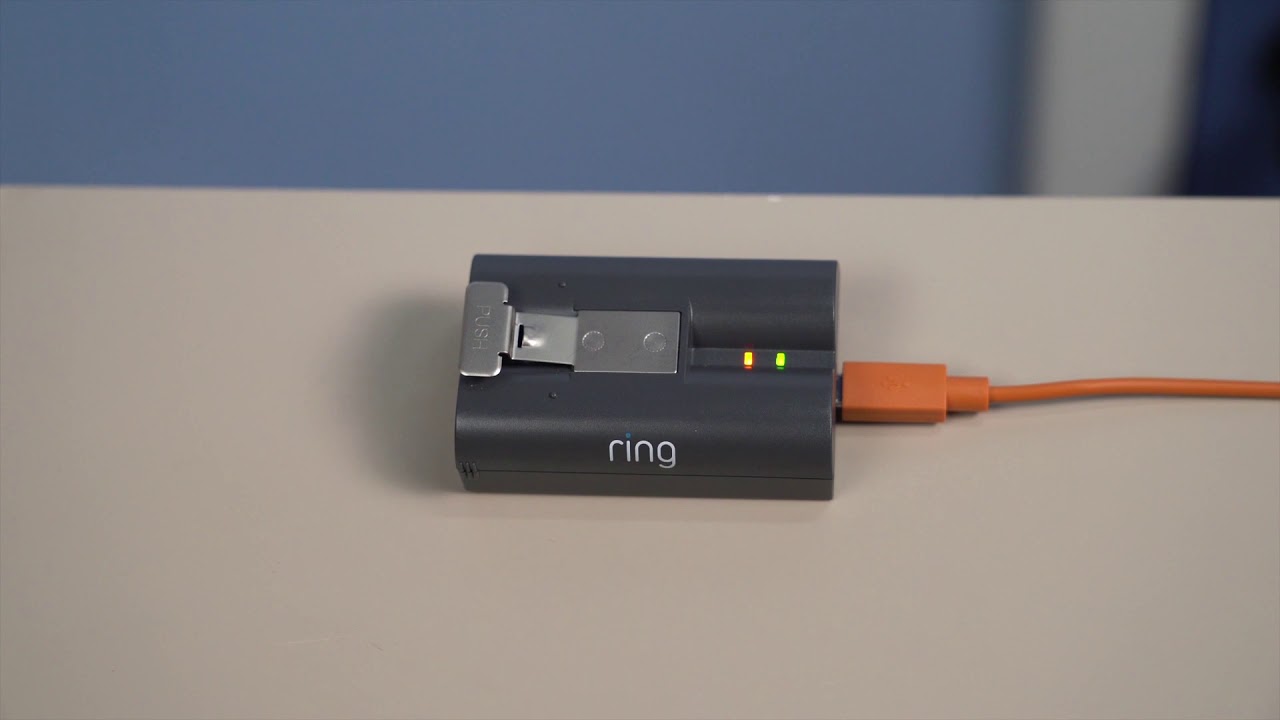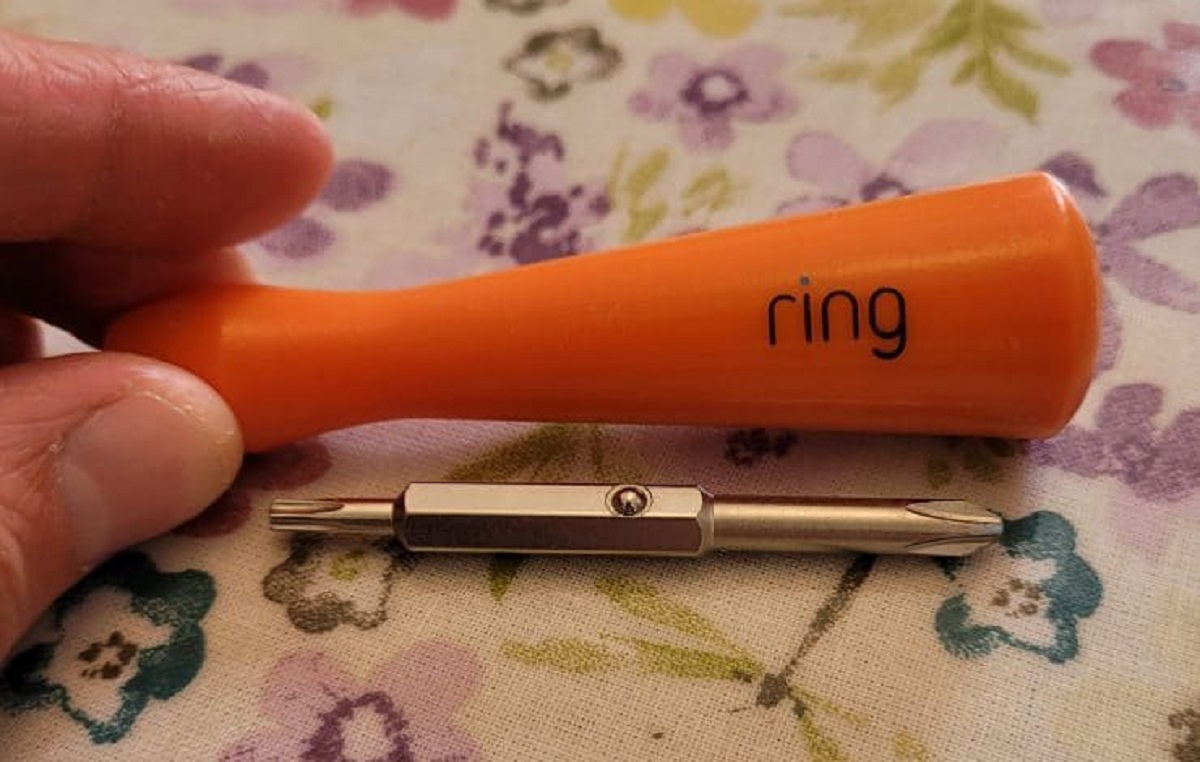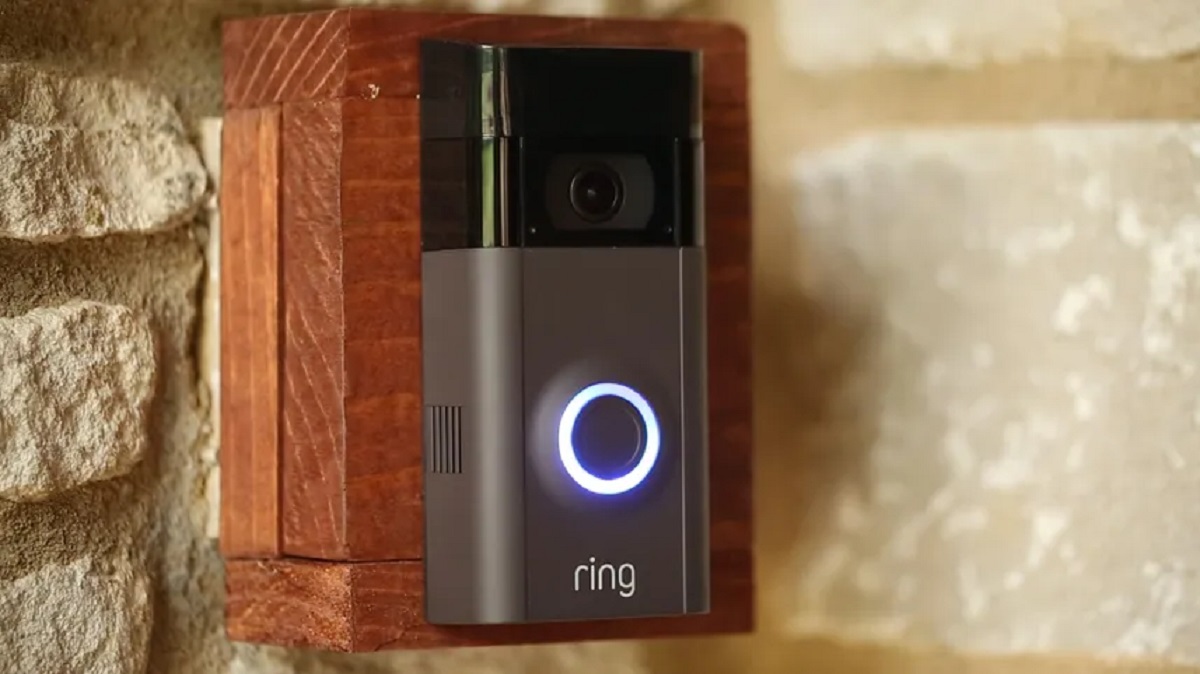Introduction
Welcome to the world of modern home security with the Ring Video Doorbell. In today’s fast-paced and interconnected society, it is more important than ever to ensure the safety and security of our homes. The Ring Video Doorbell has revolutionized the way we protect our homes, providing convenience, peace of mind, and cutting-edge technology all in one device.
The Ring Video Doorbell is a smart doorbell that allows homeowners to see, hear, and speak to visitors at their front door, whether they are at home or away. It provides a live video feed, two-way audio communication, and even motion detection capabilities. With its sleek design and user-friendly interface, the Ring Video Doorbell has quickly become a popular choice among homeowners looking to enhance the security of their homes.
One of the standout features of the Ring Video Doorbell is its unique blue light. This subtle but eye-catching feature serves a specific purpose and holds specific meanings. In this article, we will explore why the Ring Video Doorbell turns blue, the significance of the blue light, and the various modes it can be in. Additionally, we will look at common issues related to the blue light and troubleshooting solutions.
So, if you’re ready to dive into the world of the Ring Video Doorbell and uncover the mysteries behind its blue light, let’s get started!
Explanation of the Ring Video Doorbell
Before we delve into the specifics of the blue light feature, let’s first understand what the Ring Video Doorbell is and how it works. The Ring Video Doorbell is a smart home security device that combines a doorbell with a camera, allowing homeowners to monitor and interact with visitors at their front door.
When someone rings the doorbell, the Ring Video Doorbell sends a notification to the homeowner’s smartphone or other connected devices. This enables them to see a live video feed of their front door, record footage, and have a conversation with the visitor using two-way audio. The device also has motion detection capabilities, alerting homeowners to any movement near their front door.
The Ring Video Doorbell is designed to enhance home security and provide homeowners with peace of mind. It allows them to keep an eye on their property from anywhere at any time, providing a sense of security even when they’re away from home. The device is easy to install, and its user-friendly app makes it simple to access and control its features.
With the increasing popularity of smart home technology, the Ring Video Doorbell has become an integral part of many households’ security systems. Its ability to provide real-time monitoring, convenient remote access, and seamless integration with other smart devices has made it a top choice for homeowners seeking to enhance the security and convenience of their homes.
Now that we have a better understanding of the Ring Video Doorbell and its primary functions, let’s dig deeper into the intriguing blue light feature and why it is an important aspect of this innovative device.
Understanding the Blue Light Feature
When you look at the Ring Video Doorbell, you may notice a small blue light situated around the doorbell button. This blue light serves as an indicator, providing important information about the status of the device.
The blue light feature on the Ring Video Doorbell serves multiple purposes. First and foremost, it acts as a deterrent, letting potential intruders know that the property is under surveillance. The presence of a visible camera and a prominent blue light can dissuade individuals with nefarious intentions from targeting your home.
Furthermore, the blue light feature also helps homeowners easily locate the doorbell, especially during nighttime or in low-light conditions. Its glowing blue color makes it stand out, ensuring that visitors don’t struggle to find the doorbell button when they arrive at your home.
In addition to these practical uses, the blue light on the Ring Video Doorbell holds symbolic significance. It represents a symbol of protection and a signal of security. The blue light lets you know that your home is equipped with advanced security measures and that you can trust in the safety it provides for you and your family.
Moreover, the blue light also serves as a visual cue for visitors, letting them know that the Ring Video Doorbell is active and ready for interaction. When a visitor sees the blue light, it gives them confidence that their presence has been acknowledged, and they can proceed with using the doorbell features to engage in a conversation with the homeowner.
In essence, the blue light feature on the Ring Video Doorbell is not merely aesthetic. Its primary function is to enhance security, act as a deterrent, and provide reassurance to homeowners and visitors alike.
Now that we have a better understanding of the blue light feature on the Ring Video Doorbell and its significance, let’s explore the reasons why the device may turn blue in different scenarios.
Significance of the Blue Light
The blue light on the Ring Video Doorbell holds significant meaning in terms of its functionality and the messages it conveys. Understanding the significance of the blue light can help homeowners and visitors interpret its various states and navigate their interactions with the device.
One of the primary significances of the blue light is that it indicates the device’s functionality. When the Ring Video Doorbell is in its normal operational mode, the blue light will be illuminated, informing homeowners and visitors that the device is active and ready for use.
Additionally, the blue light serves as an indicator of connection status. When the Ring Video Doorbell is successfully connected to the internet and functioning properly, the blue light will remain solid. This signifies that the device is online, allowing homeowners to receive real-time notifications, view the live video feed, and communicate with visitors.
On the other hand, if the blue light is blinking or flashing, it may indicate a connection issue. This could mean that the device is not connected to the internet, experiencing a weak Wi-Fi signal, or encountering an error. In such cases, troubleshooting may be required to restore the device’s connection and functionality.
Another important significance of the blue light is that it acts as a visual cue for visitors. The glowing blue light signals to guests that the Ring Video Doorbell is active and ready for use. This helps visitors easily locate the doorbell button, ensuring a seamless interaction and communication process.
The blue light also conveys a sense of security and safety. It serves as a reminder that the property is equipped with advanced security measures and surveillance. The visible presence of the blue light can help deter potential intruders and provide homeowners with increased peace of mind.
Furthermore, the blue light on the Ring Video Doorbell signifies the device’s integration with other smart home systems. It acts as a visual indication that the device works seamlessly with other compatible devices, allowing homeowners to create a comprehensive and interconnected smart home security system.
In summary, the blue light on the Ring Video Doorbell holds significant meaning in terms of functionality, connection status, visitor cues, security, and integration. Understanding the significance of the blue light enables homeowners and visitors to make the most of the device’s capabilities and enhances the overall experience of using the Ring Video Doorbell.
Reasons Why the Ring Video Doorbell Turns Blue
The Ring Video Doorbell may turn blue for various reasons, signaling different states and functions of the device. Understanding these reasons can help homeowners troubleshoot issues and make the most of their Ring Video Doorbell’s capabilities.
One common reason why the Ring Video Doorbell turns blue is to indicate that the device is in its normal operational mode. When the device is functioning properly, the blue light will be solid, signaling that it is active and ready to receive motion alerts, capture footage, and enable two-way communication with visitors.
Another reason why the Ring Video Doorbell may turn blue is to indicate that it is in setup mode. During the initial setup process, the device will enter a series of blinking blue lights. This is an indication that it is ready to connect to a Wi-Fi network and complete the setup process. Users can follow the instructions provided by the Ring app to ensure a successful setup.
In some instances, the Ring Video Doorbell may temporarily turn solid blue when the device is updating its firmware. Firmware updates are important to ensure that the device operates efficiently and has the latest features and bug fixes. During the update process, it is essential to allow the device to complete the update without interruption.
Furthermore, the Ring Video Doorbell may turn solid blue during a call or conversation with a visitor. This is an indication that the device is actively engaged in a communication session and is ready for interaction. The solid blue light provides assurance to both homeowners and visitors that the conversation is being captured and transmitted effectively.
In the event of a power or battery issue, the Ring Video Doorbell may display a spinning white light followed by a solid blue light. This indicates that the device has entered low power mode and is trying to conserve power. If the device is hardwired, it is crucial to check the power source, wiring, and voltage to resolve any issues with power supply. For battery-powered devices, replacing or recharging the battery may be necessary.
It is important to note that different Ring Video Doorbell models may have slight variations in the behavior and indications of the blue light. Users should consult the device manual or the Ring app for specific instructions and explanations related to their particular model.
By understanding the reasons why the Ring Video Doorbell turns blue, homeowners can troubleshoot any issues that may arise and make informed use of the device’s functionality.
The Different Modes of the Blue Light
The blue light on the Ring Video Doorbell can assume different modes, each indicating a specific state or function of the device. Understanding these modes can help homeowners interpret the blue light’s behavior and make informed decisions when using their Ring Video Doorbell.
1. Solid Blue Light: This is the normal mode of the Ring Video Doorbell. When the blue light is solid, it signifies that the device is activated and functioning properly. Homeowners can expect to receive motion alerts, view the live video feed, and communicate with visitors using two-way audio.
2. Blinking Blue Light: When the blue light on the Ring Video Doorbell is blinking, it usually indicates that the device is in setup mode. During the initial setup process, the device enters this mode to guide users through the necessary steps to connect it to a Wi-Fi network and complete the setup successfully.
3. Spinning White Light followed by Solid Blue Light: This mode typically occurs when the Ring Video Doorbell is experiencing a power or battery issue. The spinning white light indicates that the device is attempting to conserve power, while the solid blue light represents low power mode. It is essential to address the power source or battery to resolve the issue and restore the device’s proper functioning.
4. Flashing Blue Light with White Lights: When the Ring Video Doorbell displays a flashing blue light along with white lights, it usually means that the device is updating its firmware. Firmware updates aim to enhance the device’s performance, add new features, and address any software issues. It is essential to allow the update process to complete without interruption to ensure optimal performance.
It is important to note that the specific modes and indications may vary slightly depending on the model of the Ring Video Doorbell. Users should consult the device manual or the Ring app for precise explanations and instructions related to their specific device.
By understanding the different modes of the blue light on the Ring Video Doorbell, homeowners can quickly identify the device’s current state and troubleshoot any issues that may arise.
Troubleshooting the Blue Light Issue
If you are experiencing issues with the blue light on your Ring Video Doorbell, there are a few troubleshooting steps you can take to diagnose and resolve the problem. These steps can help you ensure that your device is functioning properly and that the blue light is displaying the appropriate indications.
1. Check Internet Connection: Start by checking your internet connection. Ensure that your Wi-Fi network is active and functioning properly. If possible, try restarting your modem and router to refresh the connection. A strong and stable internet connection is crucial for the Ring Video Doorbell to operate smoothly.
2. Verify Power Source: If your Ring Video Doorbell is hardwired, check the power source. Make sure that the wiring is securely connected and that there is adequate voltage reaching the device. If necessary, consult an electrician to assess and resolve any power-related issues.
3. Battery Status: If your Ring Video Doorbell is battery-powered, check the battery status. Ensure that the battery is properly inserted and has sufficient charge. If the battery is low, consider replacing it or recharging it as per the manufacturer’s instructions.
4. Update Firmware: Confirm that your Ring Video Doorbell is running the latest firmware version. Firmware updates often include bug fixes and performance enhancements. To check for firmware updates, open the Ring app and navigate to the Device Settings. Look for any available firmware updates and follow the instructions provided to update your device.
5. Reset Device: If you have tried the previous troubleshooting steps and the issue persists, you may need to reset your Ring Video Doorbell. Refer to the device manual or the Ring app for instructions on how to perform a reset. Note that resetting the device will remove any customized settings and will require you to set it up again.
6. Contact Support: If none of the above steps resolve the blue light issue, it may be necessary to reach out to Ring customer support for further assistance. They can provide additional troubleshooting guidance or arrange for a repair or replacement if necessary.
Remember, troubleshooting steps may vary depending on the specific model of your Ring Video Doorbell. Always refer to the device manual or the Ring app for model-specific instructions and support.
By following these troubleshooting steps, you can address common issues related to the blue light on your Ring Video Doorbell and ensure that it is functioning properly.
Conclusion
The blue light feature on the Ring Video Doorbell serves multiple purposes, from acting as a deterrent and signaling the device’s functionality to enhancing security and providing reassurance to homeowners and visitors. Understanding the significance of the blue light and the different modes it can assume allows users to interpret its behavior and make the most of their Ring Video Doorbell.
Throughout this article, we have explored the various aspects of the Ring Video Doorbell’s blue light feature, including its explanation, significance, reasons for turning blue, and troubleshooting steps for resolving any issues.
The Ring Video Doorbell has revolutionized home security, providing homeowners with a convenient and effective way to monitor and interact with visitors at their front door. With its intuitive design and advanced features, this smart home security device has become a popular choice for those seeking to enhance the safety and convenience of their homes.
Whether it’s illuminating in its solid blue state, blinking during setup mode, or spinning in low power mode, the blue light on the Ring Video Doorbell serves as a visual cue, communication indicator, and symbol of security. Understanding the different states and indications of the blue light empowers users to make the most of their device and troubleshoot any issues that may arise.
Remember to consult the device manual or the Ring app for specific instructions and explanations related to your particular Ring Video Doorbell model. In case of persistent issues, contacting Ring customer support will ensure that you receive the necessary assistance.
We hope that this article has provided you with valuable insights into the blue light feature of the Ring Video Doorbell and helped you navigate its functionality with confidence. By harnessing the power of this innovative device, you can protect your home, enhance security, and enjoy peace of mind knowing that you have a reliable and advanced doorbell system at your disposal.









